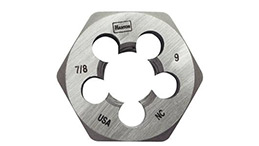
Nov . 11, 2024 19:55
Back to list
صمام التنفيس
Understanding the Pressure Relief Valve Its Importance and Functionality
In industrial applications and various engineering fields, pressure management is critical to ensuring safety and efficiency. One of the most crucial components in managing pressure is the pressure relief valve (PRV), also known as a safety valve or venting valve. This article explores the importance, functionality, and types of pressure relief valves, demonstrating their essential role in various systems.
What is a Pressure Relief Valve?
A pressure relief valve is a mechanical device designed to automatically release pressure from a system when the pressure exceeds a predetermined threshold. This is crucial in preventing equipment failure, system leaks, and in worst-case scenarios, explosions that could result from over-pressurization. PRVs are commonly found in steam systems, gas pipelines, chemical processing plants, and various other applications where pressure control is vital.
The Importance of Pressure Relief Valves
Pressure relief valves play a critical role in maintaining system integrity by providing a safety mechanism that protects personnel and equipment. For example, in a steam boiler, if the pressure exceeds the safe operating levels, the PRV activates to release steam, thereby preventing potential boiler failure and catastrophic accidents. Without proper pressure relief mechanisms, the potential for accidents increases significantly, making PRVs essential in industrial setups.
How Does a Pressure Relief Valve Work?
The basic operation of a pressure relief valve is relatively simple. The valve consists of a spring-loaded mechanism that holds the valve closed under normal operating conditions. When the system pressure reaches a certain level, known as the set pressure, the force exerted by the fluid against the valve exceeds the force exerted by the spring. This causes the valve to open, allowing the fluid (gas, steam, or liquid) to escape, thus reducing pressure back to safe levels. Once the pressure falls below the set threshold, the spring pushes the valve back into the closed position.
.
There are several types of pressure relief valves, each with its unique design and application. The most common types include
صمام التنفيس

1. Spring-loaded Relief Valves These are the most widely used PRVs, utilizing a spring mechanism to maintain closure until the set pressure is reached.
2. Pilot-operated Relief Valves These valves utilize a pilot signal to open and close, allowing for more precise pressure control. They are often used in high-capacity applications.
3. Balanced Bellows Relief Valves These are designed to minimize the effect of back pressure on the valve’s operation, ensuring that it will open reliably even in fluctuating pressure conditions.
4. Electric Relief Valves Incorporating electronic controls, these valves can respond to pressure changes more dynamically, providing automated and efficient pressure management.
Maintenance and Safety Considerations
Regular maintenance and inspection of pressure relief valves are critical to ensure their reliability and functionality. Factors such as corrosion, build-up of debris, and wear and tear can affect a valve’s performance. Routine testing and maintenance schedules should be implemented to verify the valve's set pressure and overall operation.
Moreover, proper training for staff on the importance of pressure relief valves and how to respond in the event of a pressure surge can enhance workplace safety.
Conclusion
In summary, pressure relief valves are a linchpin in the safe operation of pressure systems across various industries. Their ability to automatically manage excess pressure makes them indispensable in protecting personnel, equipment, and the environment. As technology progresses, the design and functionality of PRVs continue to evolve, further enhancing their efficiency and effectiveness in maintaining pressure safety. Understanding and appreciating the role of pressure relief valves is vital for anyone involved in industries where pressure management is a critical concern.
Next:
Latest news
-
Safety Valve Spring-Loaded Design Overpressure ProtectionNewsJul.25,2025
-
Precision Voltage Regulator AC5 Accuracy Grade PerformanceNewsJul.25,2025
-
Natural Gas Pressure Regulating Skid Industrial Pipeline ApplicationsNewsJul.25,2025
-
Natural Gas Filter Stainless Steel Mesh Element DesignNewsJul.25,2025
-
Gas Pressure Regulator Valve Direct-Acting Spring-Loaded DesignNewsJul.25,2025
-
Decompression Equipment Multi-Stage Heat Exchange System DesignNewsJul.25,2025

